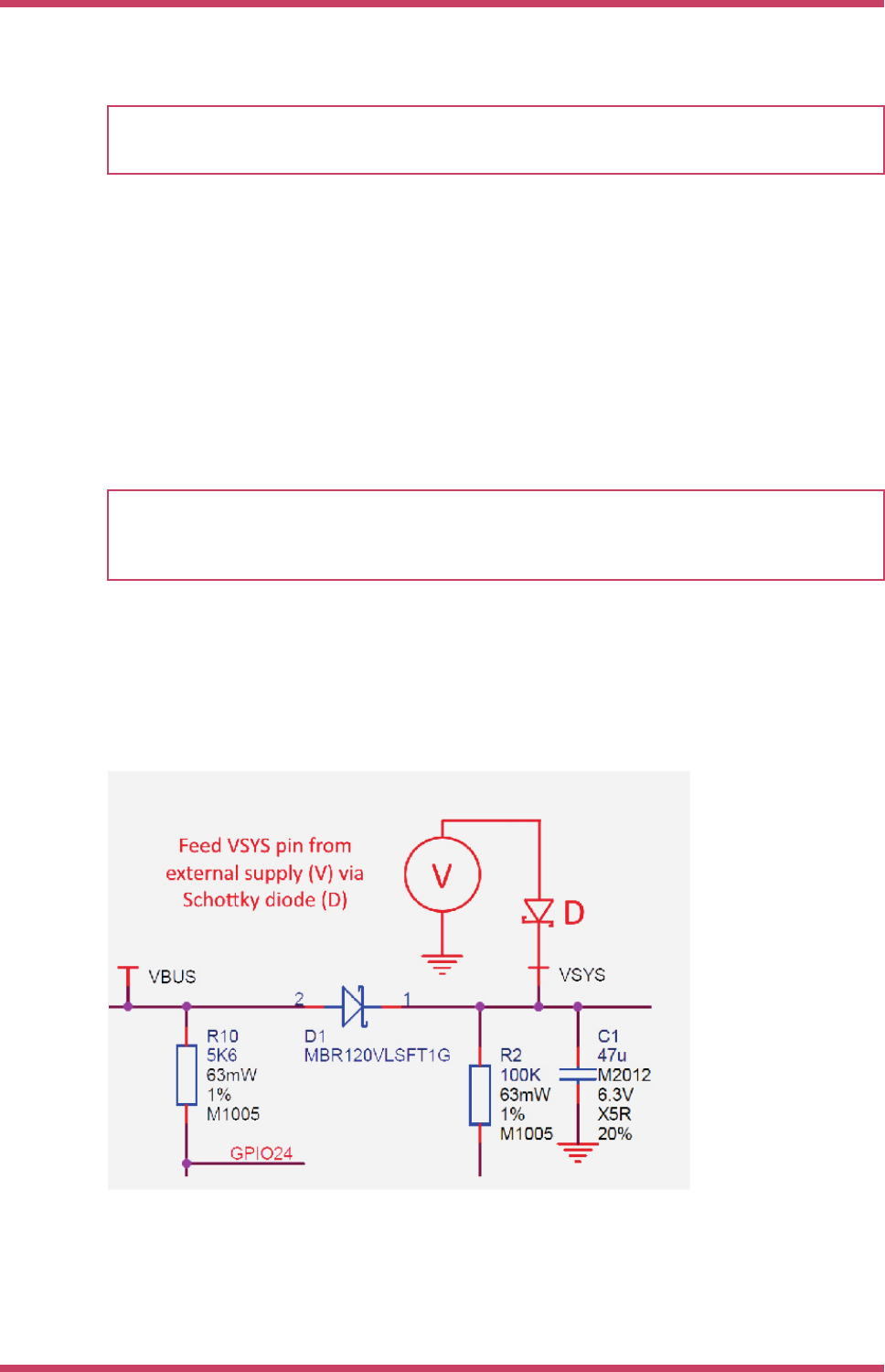Datasheet
Table Of Contents

NOTE
The RP2040 has an on-chip linear regulator (LDO) that powers the digital core at 1.1V (nominal) from the 3.3V supply,
which is not shown in Figure 14.
4.5. Powering Pico
The simplest way to power Pico is to plug in the micro-USB, which will power VSYS (and therefore the system) from the
5V USB VBUS voltage, via D1 (so VSYS becomes VBUS minus the Schottky diode drop).
If the USB port is the only power source, VSYS and VBUS can be safely shorted together to eliminate the Schottky diode
drop (which improves efficiency and reduces ripple on VSYS).
If the USB port is not going to be used, it is safe to power Pico by connecting VSYS to your preferred power source (in the
range ~1.8V to 5.5V).
IMPORTANT
If you are using Raspberry Pi Pico in USB Host mode (see for instance the USB HID example, https://github.com/
raspberrypi/pico-examples/tree/master/usb/host/host_hid/host_hid.c) then you must power Pico by providing 5V to
the VBUS pin.
The simplest way to safely add a second power source to Pico is to feed it into VSYS via another Schottky diode (See
Figure Figure 15). This will 'OR' the two voltages, allowing the higher of either the external voltage or VBUS to power VSYS,
with the diodes preventing either supply from back-powering the other. For example a single Lithium-Ion cell* (cell voltage
~3.0V to 4.2V) will work well, as will 3xAA series cells (~3.0V to ~4.8V) and any other fixed supply in the range ~2.3V to
5.5V. The downside of this approach is that the second power supply will suffer a diode drop in the same way as VBUS
does, and this may not be desirable from an efficiency perspective or if the source is already close to the lower range of
input voltage allowed for the RT6150.
Figure 15. Raspberry
Pi Pico power ORing
using diodes.
An improved way to power from a second source is using a P-channel MOSFET (P-FET) to replace the Schottky diode as
shown in Figure 16. Here, the gate of the FET is controlled by VBUS, and will disconnect the secondary source when VBUS
is present. The P-FET should be chosen to have low on resistance, and therefore overcomes the efficiency and voltage-
drop issues with the diode-only solution.
Note that the Vt (threshold voltage) of the P-FET must be chosen to be well below the minimum external input voltage, to
Raspberry Pi Pico Datasheet
4.5. Powering Pico 19










